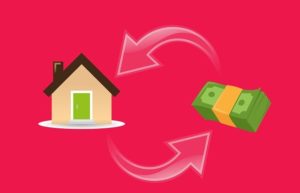Given that the market has been moving higher in recent years, many homeowners now have more equity in their homes than they thought. There are a couple of ways of accessing that equity. This piece will look at how equity in your home actually works.

How Does Equity in Your Home Work?
There are two primary ways of accessing the equity in your home.
- Sell the home.
- Refinance the mortgage.
First, you need a plan for what you’ll do with this money once you have it. Will the amount of equity you currently have been enough to accomplish this goal? Do you still need the home to live in or will you be better off without it?
If you do want to sell the home and get all the equity out, here are some tips that will help you maximize this amount.
Exterior Updates
- With good landscaping, you can transform the exterior look and upgrade your home’s curb appeal. Apart from speeding up the purchase, you can also get a higher price. You can hire a landscaper to get this done or do it yourself.
- Update outside lighting, get some fresh potted plants, and repaint the front door. This is one way to improve the feel-good factor of your home.
- Make sure your backyard is neat and tidy. You should ensure it looks every inch a welcoming space. Consider getting inexpensive furniture, outdoor lighting, and potted plants to give the garden a more appealing look.
Interior Updates
- Ensure your entrance hall creates a great first impression by giving it a neutral lick of paint. Consider adding a bit of color with a rug and other minor accessories.
- Install brighter modern lights to give your home a sunny and modern feeling. The wrong lighting can make your home feel dark and drab.
- Repaint your dark rich walls in more neutral finishes. Paint color is a personal choice for many so make sure you have left room for customization.
- Major overhauls in your bathroom and kitchen should be avoided unless your real estate expert believes the project makes good sense. However, you can update the lighting, and install new faucets, mirrors, and doorknobs, if they are worn out.
- Buyers get disillusioned with a property if there is a lot of clutter. If there are stored items in the house consider moving them away before viewings are scheduled.
- On the day of viewing, do not bring your pets along. When you have pets around, pet lovers will pay more attention to the pet and less attention to your property. Potential buyers that do not like pets will feel uncomfortable during the property viewing and will want to leave as soon as they can. A buyer with a pet allergy will be put off by the home completely. Don’t forget to take out all pet bowls, baskets, and litter trays.
- Ensure that the property is always sparkling clean prior to any viewing. If you still live in the property, get rid of household waste and make sure there is no litter in and around the home at the time of viewing. Make sure the home smells great too!
If you simply want to refinance the home to take a portion of the equity out for a smaller purpose, you’ll want to speak with your trust loan specialist. They can advise you on the different options available and which one will be the best for your situation.
How to Use Your Home Equity Efficiently

The best thing about home equity is that it increases when your home’s value rises. Aside from making renovations, you can maximize your home equity by making a larger down payment and paying more toward your mortgage each month.
Capital growth or capital appreciation refers to an increase in the value of an investment or asset over time, which can also increase your home equity. However, waiting for capital growth needs patience since it often involves gradual long-term appreciation.
Once you increase your home equity, it’ll be an easy proposition to sell it. For instance, you can buy a second property by using home equity efficiently. You can use it as a security deposit for a home loan without a cash outlay. The term is cross-collateralization. You can invest in a new property without waiting until you pay off the first property.
However, cross-collateralization also comes with a risk like other investments. Both properties could be repossessed if you can’t pay off the debt on one property. So, before you use home equity, plan where you can pull out a steady income stream to pay your mortgage loans. For instance, you can rent out the first property as transient accommodation if the property is near tourists’ spots for additional earnings.
Takeaway
With these tips, selling equity in your home and be much quicker and get you closer to moving into your new home.



